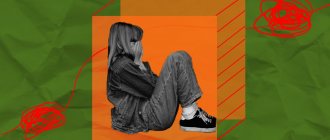Auditory hallucinations are a form of hallucination in which a person may hear different voices and sounds that are not actually there. This condition can occur for a variety of reasons, and it does not always indicate the presence of a mental illness. The reasons for their appearance may be other. But at the same time, this condition in any case requires the attention of specialists and treatment. Treatment for such hallucinations involves identifying the cause of their occurrence. In most cases, this requires treating the cause, not the effect.
Symptoms of auditory hallucinations
Despite the fact that auditory hallucinations can occur for a variety of reasons and have different manifestations, their symptoms are largely similar. This illness is that a person hears voices and sounds that are not really there. But at the same time, he can often sincerely believe in their reality and not understand that all this only seems to him. It is interesting that this phenomenon can sometimes occur not only with all kinds of diseases or painful conditions, but also in some conditions in completely healthy people.
Symptoms of auditory hallucinations include a variety of voices and sounds. It can be human voices, barking dogs, various creaks, rustles, rattles, the roar of a car or other engine, whistles, laughter, the sound of water and much more. At the same time, many people can hear completely understandable phrases or words. Some types of such hallucinations pose virtually no danger to both the patient himself and those around him, while others can cause serious harm to himself or jeopardize public safety.
Professional psychiatrists often divide such hallucinations into true and false. In the presence of true hallucinations, their manifestation seems quite realistic. Therefore, a person has no doubt that these voices and sounds actually exist. And with false hallucinations, the person with whom this phenomenon occurs also doubts the reality of this phenomenon.
Most of these voices and sounds are practically harmless to the patient himself and the people around him. This phenomenon can only complicate the patient’s life. In many cases, it contributes to the disruption of his work and social life, impairs sleep and interferes with the conduct of many usual activities.
And the most dangerous are hallucinations, which are usually called imperative. In this case, the voices that inhabit his head and seem very real may force him to kill someone or himself, steal something, or commit other dangerous or illegal actions. The patient may be forced to drive a car at high speed, jump from great heights, commit suicide, or engage in self-harm. At the same time, he is completely confident in the reality of such voices and phrases, and therefore often, without a shadow of a doubt, commits such dangerous and criminal actions against himself or other people. Such events must be properly distinguished from deliberate actions.
Kinds
- True. The patient sees, feels or hears something, but this phenomenon is bright, living in nature. The hallucination is real for the sufferer.
- Pseudohallucinations. These are visions, sounds or sensations that occur outside of objective reality.
Important: false hallucinations usually depend on suggestion or the influence of external factors.
Hallucinations vary depending on the specific sense organs that perceive:
- Visual. These can be entire storylines, mystical visions, just flashes of light or smoke. And also animals, identical objects, vision of organs in one’s body or foreign objects, etc.
- Auditory. These include ordinary noises or sounds, as well as verbal ones: imperative, when a certain voice orders the patient to do something, usually it is negative; commenting - voices discuss the patient’s thoughts, feelings and sensations, they are also negative and judgmental; contrasting, when the patient hears 2 voices directed against each other, one condemns the patient, the other defends, but at the same time they give conflicting commands to the sufferer; speech motor - it seems to the patient that certain forces are speaking for him, in an unknown language.
- Olfactory. The patient complains of unpleasant odors.
- Flavoring. The patient may experience unpleasant tastes in the mouth.
- Tactile: sensation of liquid, different temperatures, insects crawling, hugging.
- Functional. Against the background of any objects or phenomena, imaginary images, sounds, etc. appear.
- Hallucinations of Bonnet. The imaginary sensation is perceived by the analyzer that has completely or partially lost its function.
- Hemianoptic. Occurs due to a disease called hemianopsia. This is when the patient sees only half of the field of vision. Imaginary sensations arise in the area that does not see.
- Hypnagogic and hypnopompic hallucinations. They can occur even in a healthy person. They appear in the form of imaginary images or sounds that accompany a person when waking up or falling asleep. They are connected with the events of the day experienced.
Types of hallucinations depending on the analyzer:
- Psychomotor, when the patient feels that part of his body is in motion.
- Reflex, when, with a real impact on one analyzer, another is excited.
- Ecstatic. Vivid pictures or entire images appear in a state of altered consciousness.
Important: hallucinations must be distinguished from mirages and illusions, because they arise based on other factors.
Causes of auditory hallucinations
The causes of auditory hallucinations can be very different. Despite the fact that most often they are a manifestation of various mental illnesses, this phenomenon is also inherent in poisoning with all kinds of psychoactive substances. In addition, hallucinations may indicate other diseases and conditions that are not mental. There are also cases when they appeared in healthy people under certain conditions.
In the modern world, a very common cause of such hallucinations is poisoning of the body with psychotropic substances such as alcohol and various types of drugs. However, such people are not always recognized as drug addicts or alcoholics. In addition, the phenomenon can also occur during ordinary household poisoning with various poisons, food products of poor quality, household chemicals, all kinds of gases, etc.
Hallucinations are common in people with mental illness. Voices and sounds can be heard by patients with schizophrenia, Alzheimer's disease, senile dementia and similar diseases. Similar phenomena can occur with traumatic brain injuries, brain tumors, and certain types of infectious diseases that affect brain activity. In addition, they can result from a strong increase in body temperature and some other painful conditions.
In addition, sometimes completely healthy people can hear various voices that do not really exist. This sometimes happens during severe fatigue, when a person has not slept for several days in a row, and in some individuals, upon awakening, when it is difficult to draw the line between reality and sleep. Sometimes people can react in this way to the death or serious illness of loved ones, violence or other serious psychological shock. Auditory hallucinations can occur in people of all ages, from young children to the elderly.
Causes of hallucinations
What can cause hallucinations in a person?
Researcher A.S. Shmaryan (1949), studying hallucinations as the main positive symptom of schizophrenia, suggested that damage to the temporal lobes of the brain contributes to this perceptual disorder. For example, a tumor in this area often causes hallucinations.
Observing patients with a disease associated with hallucinations, a number of researchers noted a structural and functional disorder in the superior temporal gyrus and damage to the anterior section of the superior gyrus of the left temporal lobe of the brain.
The surgical method of treating epilepsy, in which electrical stimulation of the superior temporal gyrus occurs, can also lead to various acoustic effects: noise, ringing, rumble.
Damage to the right temporal region causes olfactory, gustatory and musical hallucinations. If the left region is affected, verbal hallucinations may occur with severe anxiety.
Auditory hallucinations occur when not only the temporal lobe of the brain is affected, but also its other structures that take part in the functioning of the hearing analyzer. There is a hypothesis that states that in patients with schizophrenia, when the processes responsible for recognizing internal speech are disrupted, an erroneous perception of their own internal speech occurs as speech from the outside, addressed directly to them.
In addition to the above, the appearance of various types of hallucinations can provoke a state of intoxication of the body with certain drugs or substances.
Types of auditory hallucinations
Such hallucinations can be very different. At the same time, they are divided into true and false. The patient can clearly hear different words and phrases, as well as human voices and sounds of wildlife, car sirens, barking dogs, ringing bells and many other sounds.
Professional psychiatrists identify the following types of auditory hallucinations:
- Tinnitus is all kinds of noises like whistling, grinding, crackling, and the like;
- Acoasms are sounds that differ in specificity. These may include dripping water, the sound of the surf, wind, the sound of rain, barking dogs, the noise of cars, the howl of a siren, the ringing of bells and sounds close to them;
- Phonemes - this type of auditory hallucination is often considered the most dangerous. After all, when it appears, the patient can clearly hear certain words and phrases, sometimes spoken by a specific and very real person. In many cases, such illusions can be very dangerous for the one who hears them or for the people around him.
Diagnosis of delusions and hallucinations in older people
The doctor’s task is to determine the nature of such disorders and the causes that caused them. To do this, he interviews the patient himself and his relatives. The participation of relatives is especially important. An elderly person may be hostile, negative, and refuse to communicate with the doctor.
A medical examination must be organized for the patient. The doctor collects information about the general state of health (clinical and biochemical blood and urine tests are taken). It is possible to use EEG and MRI to monitor the condition of individual organs and systems.
Auditory hallucinations in adolescents
Auditory hallucinations are quite common in adolescents. In many cases, they are caused by all sorts of psychological problems in relationships with parents and peers, difficulties in growing up and puberty, and can also be the result of violence or severe shock.
In addition, traumatic brain injuries are common in adolescence, which can also lead to auditory illusions. They can also be the result of infectious diseases or occur at high temperatures.
Modern schoolchildren, often under the influence of older friends, actively experiment with alcohol or drugs. Often their overdose leads to the formation of various types of hallucinations, including auditory ones.
Also, this phenomenon in a teenager can be a consequence of mental illness.
Diseases accompanied by hallucinations
First of all, of course, it is worth noting that the presence of hallucinations is one of the main positive signs of schizophrenia. The most common in schizophrenia are auditory hallucinations (they occur in approximately 75% of patients). This disease is also characterized by hallucinations of sensations (tactile, olfactory, auditory). Olfactory hallucinations also appear in temporal lobe epilepsy.
Visual hallucinations also occur in schizophrenia, although relatively rarely. D. Goodwin et al. (1971) believed that the percentage of patients with schizophrenia suffering from such a disorder is only 5%. In most cases, these hallucinations are symptoms of organic brain damage, delirious confusion, alcoholic or intoxication psychosis.
If we once again analyze the causes of hallucinations mentioned above, we can conclude that this disorder may indicate brain damage, tumors, various dysfunctions of the central nervous system, and intoxication of the body (typical of alcoholism and drug addiction).
Auditory hallucinations in children
Auditory hallucinations in children of preschool and primary school age are a very common phenomenon. At this age, they are often caused by fever, various infectious diseases and traumatic brain injuries. But they can also appear due to violence, serious psychological shock as a result of any events they have seen or experienced that are terrible for them. Poisoning with various poisons and toxic substances can also cause a similar phenomenon. In addition, such hallucinations sometimes indicate the presence of a mental illness. But sometimes similar illusions arise in healthy children due to severe fatigue.
Treatment methods
Treatment methods for pathology depend on the causes that caused it. There is no single scheme. For example, in case of poisoning with toxic substances, you need to stop their effect on the body. If there are neurological causes, it is necessary to begin appropriate therapy or stop the acute form of the disease.
Treatment is usually carried out with:
- Neuroleptics.
- Antidepressants.
- Means to improve blood circulation in the brain.
- Antiparkinsonian drugs.
Auditory hallucinations after alcohol binge
After an alcoholic binge, all kinds of hallucinations often appear, including auditory ones. Moreover, they are often very dangerous and can lead to very unpleasant or terrible consequences. Indeed, in such a state, the alcoholic experiences various fears, cannot sleep normally and react to the surrounding reality. This phenomenon is caused by exhaustion of the body by prolonged consumption of large quantities of alcoholic beverages, often low-quality or surrogate ones. Many alcoholics in this state may hear distinct voices that tell them to cause significant harm to their own health or commit some other illegal or dangerous act. Therefore, often after a few days after drinking, many drinkers commit suicide, murder, or become guilty of serious road accidents.
PsyAndNeuro.ru
A week ago, we published a review of the article by Sommer I. et al “Towards a personalized treatment of hallucinations”, in which the authors identified 3 main mechanisms for the development of perceptual deceptions (decreased cholinergic neurotransmission, increased dopamine synthesis and deafferentation), on which further patient management tactics depend. In another earlier article, published in the journal Schizophrenia Bulletin, the same authors examine the evidence base for treatments for hallucinations in schizophrenia and other mental and nervous disorders. This article is more focused on clinical practice, thereby organically complementing the latter - which largely considers the fundamental aspects of hallucinations and the psychopharmacological effects on them. Below are the main points of the article “The Treatment of Hallucinations in Schizophrenia Spectrum Disorders”.
Hallucinations can occur in the context of many disorders and syndromes. Therefore, the choice of treatment depends not only on the type of perceptual deceptions and the impact on daily functioning, but also on the underlying disorder. At times, it can be very difficult to determine the underlying disorder, since hallucinations, for example, in borderline personality disorder, psychotic depression or temporal lobe epilepsy, may be indistinguishable from hallucinations in schizophrenia at the phenomenological level.
Associated symptoms such as paroxysmal activity, parkinsonian motor symptoms, and loss of vision or hearing are the most reliable signs used in the differential diagnosis. Some people who only hallucinate sporadically may simply be concerned that their experience is a sign of a mental disorder, without being concerned about the hallucinations themselves. For others, the burden of hallucinations may not outweigh the side effects of their treatment. As a result, treatment may not be applicable in all cases. This article will look at some of the errors that are often associated with hallucinations, as well as specific treatment options for them.
Schizophrenia can be accompanied by hallucinations in any sensory modality. In 70% of cases they are auditory in nature, and in 50% of cases visual hallucinations are observed. Other types of hallucinations are less common.
The only type of medications known to be successfully used to treat hallucinations in schizophrenia are antipsychotics. Only 8% of first-episode psychotic patients still experience hallucinations after 1 year of treatment. However, to date, no clinical studies have been published that compare the effectiveness of different antipsychotic drugs for a single and specific indication: hallucinations. Therefore, the analysis used data from the European First Episode Psychotic Study, which assessed the effectiveness of 5 antipsychotic drugs in the treatment of hallucinations. Olanzapine, amisulpride, ziprasidone, and quetiapine were found to be equally effective against hallucinations; haloperidol, according to the study authors, cannot be the drug of first choice.
If the first choice drug does not provide improvement, it is best to switch to another drug after 2-4 weeks of treatment. Clozapine is the drug of choice for patients who are refractory to two adequate courses of antipsychotic medications. To prevent relapse, treatment should be continued with the same antipsychotic and, preferably, at the same dose. Long-acting formulations should be considered for all patients because the risk of non-compliance is very high.
Cognitive behavioral therapy (CBT) may be used in addition to antipsychotic therapy. CBT is aimed at reducing the emotional distress associated with auditory hallucinations, it teaches the patient to ignore the “voices” and focus on future plans and goals, which affects the quality of life of the patients. However, CBT had no effect on the frequency of hallucinations.
On the other hand, transcranial magnetic stimulation (TMS) can reduce the frequency and severity of auditory hallucinations. Several meta-analyses have demonstrated efficacy for low-frequency repetitive TMS of the left temporoparietal region compared with placebo. As a consequence, TMS now has the status of a potentially useful treatment for auditory hallucinations, but only in combination with modern antipsychotic therapy.
Several guidelines mention electroconvulsive therapy (ECT) as the final step in the treatment of treatment-resistant psychoses within schizophrenia. Although several studies have shown clinical improvement following the use of ECT, specific reductions in hallucination severity have never been assessed at the group level.
Delirium is an acute neuropsychiatric syndrome characterized by psychotic symptoms such as hallucinations and delusions in the presence of decreased attention, fluctuations in consciousness and other cognitive functions. This condition is very common in patients admitted to intensive care units, with an incidence of 32%, and is notably associated with a poor prognosis and increased mortality.
The only etiological treatment for delirium is to improve the patient's physical condition. Symptomatic treatment of hallucinations and other symptoms of delirium should begin with measures aimed at normalizing the patient's circadian rhythm and orientation. Pharmacological treatment should preferably consist of haloperidol or olanzapine, as recommended in the latest NICE guidelines. Although benzodiazepines are widely used to treat delirium, their use is recommended only for alcoholic delirium. Cholinesterase inhibitors are not recommended, as evidenced by a randomized clinical trial of rivastigmine in patients with delirium admitted to the intensive care unit. This study was stopped early due to a significant increase in mortality and duration of delirium compared with the control group.
The prevalence of hallucinations and other psychotic symptoms among patients with PD is 80%. In the case of dementia with Lewy bodies, which is pathogenetically closely related to PD, these numbers are even higher, especially for visual hallucinations. Auditory hallucinations are present in 20% of cases.
The pathophysiology of psychosis in PD and dementia with Lewy bodies involves a complex interaction of environmental and disease-related factors, including central dopaminergic activity, imbalance of the dopaminergic and cholinergic neurotransmitter systems, dysfunction of the visual pathways, changes in the regulation of the sleep-wake cycle, and impaired attentional focus. However, the most important external factor in the development of hallucinations within PD is drug treatment.
Treatment strategies: decrease antiparkinsonian medications, increase low-dose “atypical” antipsychotics, and possibly cholinesterase inhibitors. Eng and Welty reviewed 13 studies of antipsychotic treatment in patients with PD and concluded that long-term therapy with clozapine is indeed effective, while results from studies using quetiapine are inconsistent. Only one double-blind, placebo-controlled trial involving 188 patients with PD and hallucinations supports the effectiveness of the cholinesterase inhibitor rivastigmine. Thus, although the use of cholinesterase inhibitors, especially rivastigmine, appears to be a promising treatment for hallucinations in PD, these studies support the use of clozapine alone.
In AD, the occurrence of psychosis in 30–50% of cases has serious consequences for both patients and caregivers. Cholinesterase inhibitors such as donepezil may have a beneficial effect on hallucinations with a relatively mild side effect profile. Another study on the treatment of psychosis in AD examined the effectiveness of olanzapine, quetiapine, risperidone and placebo over 36 weeks. The results showed that risperidone was more effective than the other two drugs and placebo. However, these drugs should be taken with caution due to the increased risk of complications in elderly patients.
As a consequence, it is strongly recommended not to consider antipsychotic drugs as a first choice for the treatment of psychotic symptoms in AD. Extrapyramidal symptoms and arrhythmias due to QT prolongation are common complications of “typical” antipsychotic drugs, while various cerebrovascular pathologies occur more often with the use of “atypical” antipsychotics. However, these medications should be used when the severity of symptoms is extreme or when symptoms do not respond to other types of medications or nonpharmacologic interventions.
The reported incidence of hallucinations and other psychotic symptoms in epilepsy is 3.3%, and in temporal lobe epilepsy it is as high as 14%. Hallucinations may occur shortly before (aura), during, or after an epileptic seizure, but often occur independently of any motor seizures. Hallucinations often resemble those found in patients diagnosed with schizophrenia and are referred to as “schizophrenic psychoses of epilepsy.”
Treatment of hallucinations should primarily involve minimizing any drug that may mediate these symptoms. Various antiepileptic drugs, such as phenobarbital, zonisamide, levetiracetam and gabapentin, are known to induce hallucinations. In such cases, reducing the dose or switching to another antiepileptic drug can lead to relatively rapid relief of hallucinations.
When antiepileptic drugs cannot be reduced or discontinued, antipsychotics are the drugs of choice. Clozapine and chlorpromazine should be avoided due to their epileptogenic properties, while quetiapine, risperidone and haloperidol are generally well tolerated.
Patients with low vision may experience complex visual hallucinations, a condition known as Charles Bonnet syndrome. Likewise, people with progressive hearing loss may develop auditory hallucinations of music, voices, or other sounds.
It is believed that such hallucinations are actually phenomena due to deafferentation of areas of the visual or auditory association cortex of the brain, which can lead to so-called “phantom perceptions.” Cognitive defects and social isolation may act as additional risk factors.
Patients who understand their unrealistic nature tend to suffer less from them, although they may still be distressed by the fear of "inevitable madness." Reassurance and explanation that visual or auditory deceptions do not imply any mental disorder can have a powerful therapeutic effect.
According to the authors, psychotropic treatment is not always necessary, since relief of hallucinations may cease either spontaneously or after the cessation of social isolation. The first choice of treatment is restoration of vision or hearing, for example through cataract surgery, external ear cleaning or hearing aids.
When such interventions are unsuccessful, pharmacological treatment may be considered, although the benefits of treatment do not always outweigh the disadvantages of side effects. Although antipsychotics, antiepileptic drugs, and cholinesterase inhibitors have previously been reported to be effective in these settings, there are currently no randomized studies of the effectiveness of these types of medications in patients with hallucinations as part of sensory deafferentation. If pharmacological treatment is considered necessary, quetiapine or lamotrigine may be the drugs of choice. TMS has also been used for this type of hallucination, but the results remain inconclusive.
The material was prepared as part of the ProSchizophrenia project - a specialized section of the official website of the Russian Society of Psychiatrists, dedicated to schizophrenia, modern approaches to its diagnosis and treatment.
Prepared by: Kasyanov E.D.
Source: Sommer I. et al The Treatment of Hallucinations in Schizophrenia Spectrum Disorders. Schizophrenia Bulletin, Volume 38, Issue 4, 18 June 2012, Pages 704–714, https://doi.org/10.1093/schbul/sbs034
Dear reader, in gratitude, you can financially support our project or specifically the author of this article by writing his name in the cover letter of the money transfer.
Such support is currently the only way to develop our project.
Sberbank – 5469 5500 1827 1533 YandexMoney – 410011063875586 Sberbank – 5469 5500 1827 1533 YandexMoney – 410011063875586 Sberbank – 5469 5500 1827 1533 YandexMoney – 410011063875586
How to treat auditory hallucinations
If signs of this phenomenon occur, you should not self-medicate, as it can pose a serious and even fatal danger to the body. Also, you should not hope that hallucinations will go away on their own without medical intervention. Therefore, a person who observes such symptoms in himself or his loved ones should not think about how to treat auditory hallucinations, but should consult a doctor as soon as possible. At the same time, it is not at all necessary that this problem will be treated by a psychiatrist, whom many people are very afraid to contact. After all, such auditory phenomena often occur in diseases or conditions not related to psychiatry. And the very appeal to a psychiatrist does not mean at all that such a person will be declared incompetent and will soon become an outcast from society. Modern psychiatry is very far from what it was in the twentieth century. Now many diseases that were previously considered incurable or socially dangerous are quite amenable to drug therapy.
What to do if you have hallucinations?
Today, there are a huge number of methods for treating hallucinations, and different methods are aimed at eliminating different types of hallucinations. It must be said that therapy is often aimed at treating the cause of hallucinations. But, unfortunately, it is not always possible to eliminate the cause of the disease. It is necessary that hallucinations or the disease that caused them be diagnosed by an experienced specialist. Do not be shy or wait for an exacerbation; you should consult a doctor immediately.
Get a consultation at the psychiatric department of the KORSAKOV clinic.
How to identify hallucinations?
Diagnostics involves determining whether there is a difference from the illusory deception that a healthy person may have. It is necessary to look at the general condition and behavior of the patient, check whether he has delusions or other mental illnesses. Analyze his facial expressions, gestures, check whether he has a feeling of anxiety, and based on the overall picture, draw a conclusion about the person’s condition. This way you can understand whether a disease exists, and if so, determine the degree.
How to deal with hallucinations?
The first step is to diagnose the cause of the hallucination and possible diseases. Next, you need to prescribe a course of appropriate treatment.
At the diagnostic stage, an anamnesis is collected, it is clarified what exactly the patient sees, hears and feels. A thorough examination of what is visible, audible, and felt is carried out, an examination is carried out and a method of treatment is selected. The method of monitoring and caring for the patient is also selected.
Online consultation with a specialist
regarding your question!
License number: LO-77-01-019036
How to get rid of auditory hallucinations
In addition, often the answer to the question: “How to get rid of auditory hallucinations?” The psychologist also knows. Contacting him will be advisable if this problem is caused by violence, psychological trauma, severe fear or puberty in adolescents.
If such hallucinations are suspected in children, parents should be able to distinguish this problem from the manifestation of a child’s violent imagination or the child’s retelling of his dreams. And parents of teenagers, if they have sound or other hallucinations, should exclude the abuse of alcohol, drugs and other psychoactive or toxic substances.
Olfactory, gustatory and tactile hallucinations
Olfactory hallucinations. as one of the positive symptoms of schizophrenia. usually manifested by an unpleasant odor (“poisonous gases”), gustatory — by an “unusual taste”; as a rule, both of them are associated not only with each other, but also with persecutory ideas: poisoning, influence, persecution. It must be remembered that olfactory hallucinations are often observed in temporal lobe epilepsy; here they appear periodically, often accompanied by impaired perception.
Tactile (haptic, somatic, kinesthetic) hallucinations rarely appear, reflecting a distorted perception of touch, altered sensations of the body. At the same time, the patient feels an impact (electrical, magnetic, radiation, etc.), accompanied by a burning sensation, pricking, impact, etc. He may feel stretching, twisting, and pain in the internal organs.
Descriptions of altered sensations, especially in the genitals, may seem completely absurd to an outside observer.
Return to Contents
How does the acute form of the disease progress?
Psychiatrists note that the disease goes through several stages:
- Beginner or easy. The patient feels mild anxiety and apathy, against the background of which the desire for alcoholic beverages weakens.
- The first signs are that the situation is getting worse. Voices are first masked as normal ambient sounds, gradually becoming more noticeable. With alcoholic psychosis, delusional ideas and persecution mania come to the fore. In the case of the development of delirium tremens, much more often the addict observes visual hallucinations.
- The healing process. It occurs against a background of general weakness, difficulty falling asleep, anxious and depressive thoughts.
More often the situation worsens closer to night. Fear coupled with delusion pushes an alcoholic into aggression; he can attack others or try to harm himself. The disease progresses if the addict continues to drink alcohol during this time.
Why do hallucinations occur?
Visions can manifest themselves after years of systematic alcohol abuse. They are often the result of long alcohol marathons (several days or more).
From a medical point of view, the cause of this phenomenon is a high level of acetaldehyde in the blood. For this reason, alcoholic encephalopathy occurs and a number of pathological changes occur in the brain. The situation becomes aggravated during the period of forced cessation of alcohol or at the time of alcohol withdrawal. At such moments, the addict may experience hallucinations.
What else contributes to their appearance:
- Previous infectious diseases.
- Nervous exhaustion and fatigue.
- Long-term sleep problems.
- Deficiency of B vitamins, responsible for metabolic processes in neurons.
The likelihood of occurrence increases significantly with the length of experience of alcohol dependence. More often this is typical for stages 2-3, however, the manifestations of the disorder are a purely individual thing. Much depends on your personality type and mental state. Some people have a complete picture with all the symptoms together, others may have only some manifestations, and the picture as a whole is blurred.











